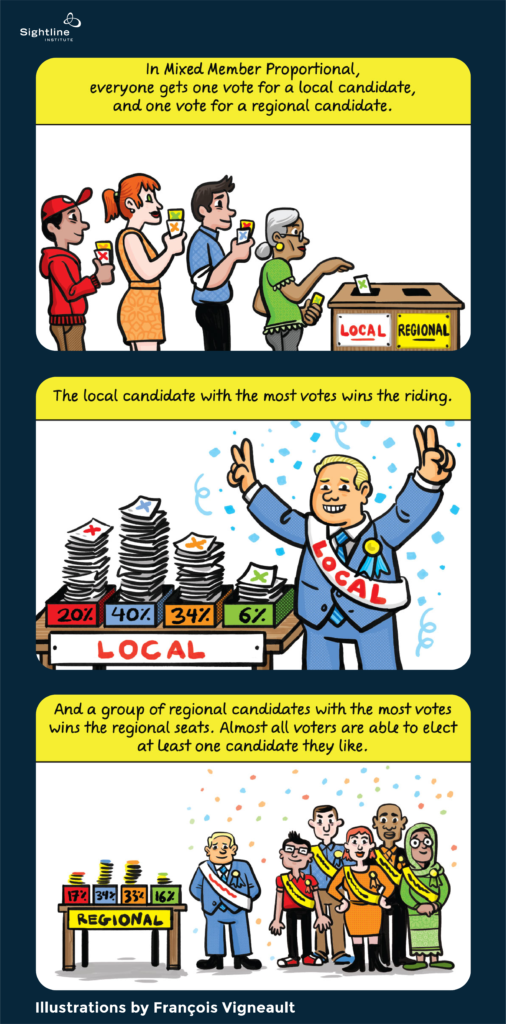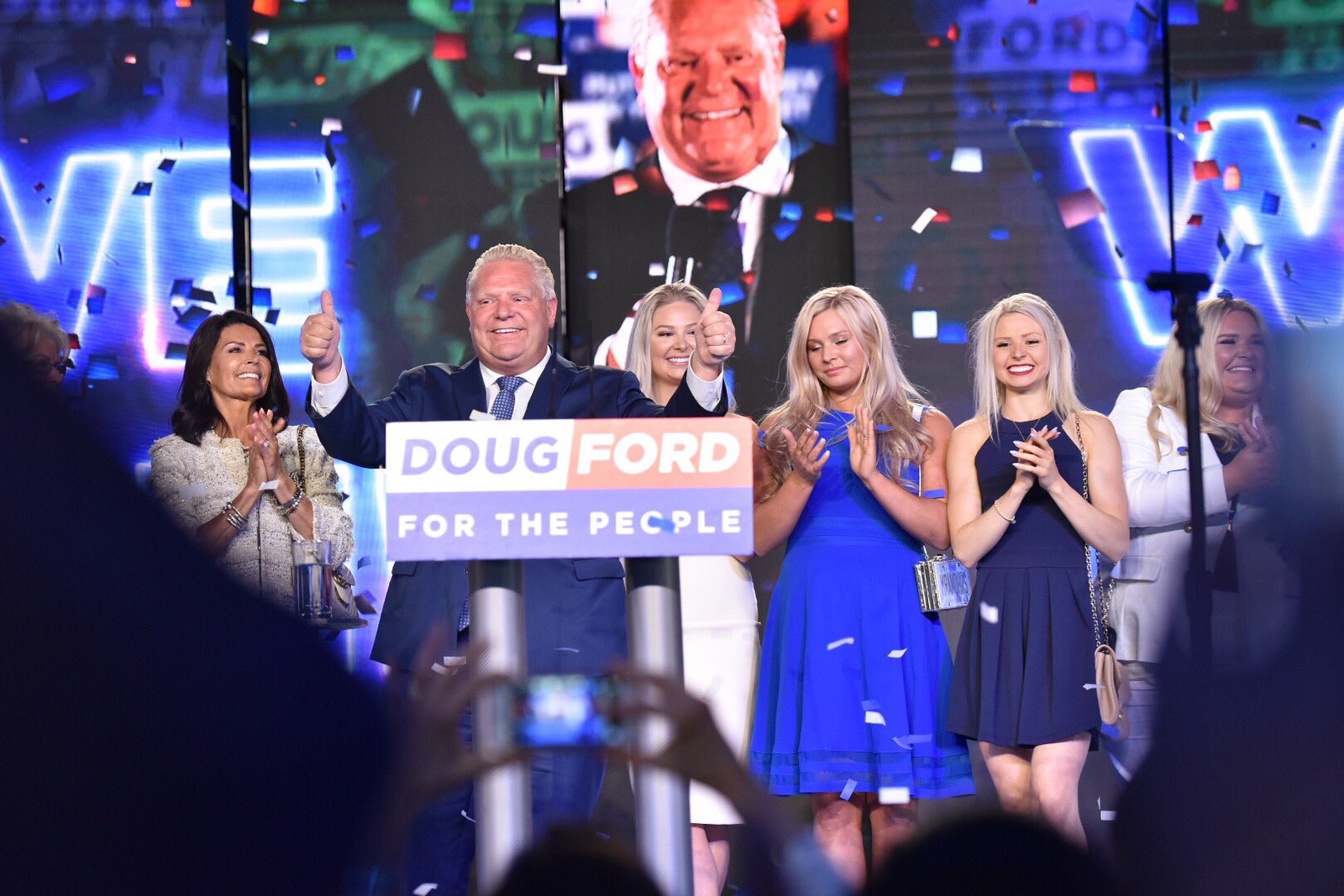This year, Doug Ford, whose brand of right-wing populism has drawn comparison to US president Donald Trump, took control of the Ontario government. Ford’s Progressive Conservative Party took majority control of the government with a minority of the votes because Ontario, like British Columbia and other places in Canada and the United States, uses a form of voting that distorts the will of the voters in elections.
British Columbia could elect an extremist like Ford, because it uses the same election method—the “First-Past-the-Post” (FPTP) system. In FPTP, the candidate with the most votes wins, even if he didn’t win a majority (as in American presidential elections). The Ontario Progressive Conservatives won only 40 percent of the votes but got a whopping 62 percent of the seats, and effectively 100 percent control of the legislative agenda. Unfortunately, this gap isn’t unusual under FPTP. In BC, ten of its past twelve elections under the FPTP system resulted in a party taking the lion’s share of power in the Legislative Assembly with less than a majority of votes. FPTP is vulnerable to extremist takeovers. Switching to MMP would protect the province against extremists taking charge.
FPTP is purported to be a direct line between elected officials and their constituents, but it is more like a funhouse mirror that distorts the shape of the parliament. Some voters, depending on where they live, have more power than others to elect their choice for a Member of Parliament (MP). In Ontario, for example, there is one Progressive Conservative MP for every thirty-one thousand Progressive Conservative voters. It took one-hundred-sixty thousand Liberal voters—five times as many—to elect a single Liberal MP. About 1.2 million people voted for a Liberal candidate, but the party holds just 7 of 123 seats.
Said another way, most voters got a local MP they did not want. Supporters of the FPTP system claim it offers two main benefits: 1) it gives voters a local representative who goes to the capitol on their behalf, and 2) it allows voters to hold representatives accountable to voters. But Ontario’s recent election shows how FPTP doesn’t deliver on those benefits.
To the first point, most Ontario voters didn’t send a local representative to Toronto on their behalf because the majority of voters didn’t want those representatives to begin with. Less than half of the Ontarians who voted chose the candidate who now represents them in Toronto. For example, in Ottawa West-Nepean, more than two-thirds of voters wanted someone other than Progressive Conservative candidate Jeremy Roberts, yet Mr. Roberts is their only representative in parliament. In most Ontario ridings (74 out of 123), most voters wanted someone other than the winner, so their representative likely isn’t vouching for their views and experiences.
For the second point, most voters in Ontario do not have an MP who answers to them so it’s difficult for voters to hold representatives accountable. If an MP doesn’t do a good job, he or she should theoretically get “fired” by getting voted out. For more than half the voters in Ontario, that argument is moot. In some places, the riding was so split between different candidates that it was hard to interpret the message voters were sending. In others, their riding was gerrymandered to be so safe for one party and protest votes don’t matter. In the Renfrew-Nipissing-Pembroke riding, Progressive Conservative incumbent John Yakabuski won with a landslide nearly 70 percent of the vote. With its agricultural and religious base, the riding is safe for conservative candidates. About ten thousand progressive NDP and Green voters registered their opposition to Yakabuski, but they can’t hold him accountable by voting against him because he is the only one representing the conservative riding.

Proportional Representation (ProRep) straightens out the mirror so the parliament accurately reflects the voters. If Ontario had used a form of ProRep, the Progressive Conservatives would have won about 40 percent of the seats, giving their voters a fair voice but forcing the party to make common cause with another party to gain control. Or, if the Liberals and NDPs were able to work together to get a combined 52 percent of voters, they could have joined together to form a government that actually represents the true majority of voters.
Aside from accurate overall representation in parliament, ProRep is better for individual voters. Where more than half of Ontario voters were left out in the cold after this year’s FPTP election if Ontario had used, for example, Mixed Member Proportional voting, most voters would have sent an MP of their choice to Toronto.

Doug Ford’s Progressive Conservative Party in Ontario gained in popularity this year, winning 40 percent of the vote fair and square. Those voters deserve 40 percent of the seats, but not complete control over parliament. The same thing could happen in BC as long as BC keeps using FPTP—an extremist party could rise far enough to take over in Victoria, even if it didn’t win majority support from BC voters. But if BC voters say yes to the fall referendum and switch to a form of ProRep, extremist parties will be limited by their popularity, and the will of the majority will ultimately prevail.


Comments are closed.